Outsourcing Graphic Design
Outsource your graphic design to skilled professionals. Get high-quality visuals, save costs, and scale your creative projects with ease.
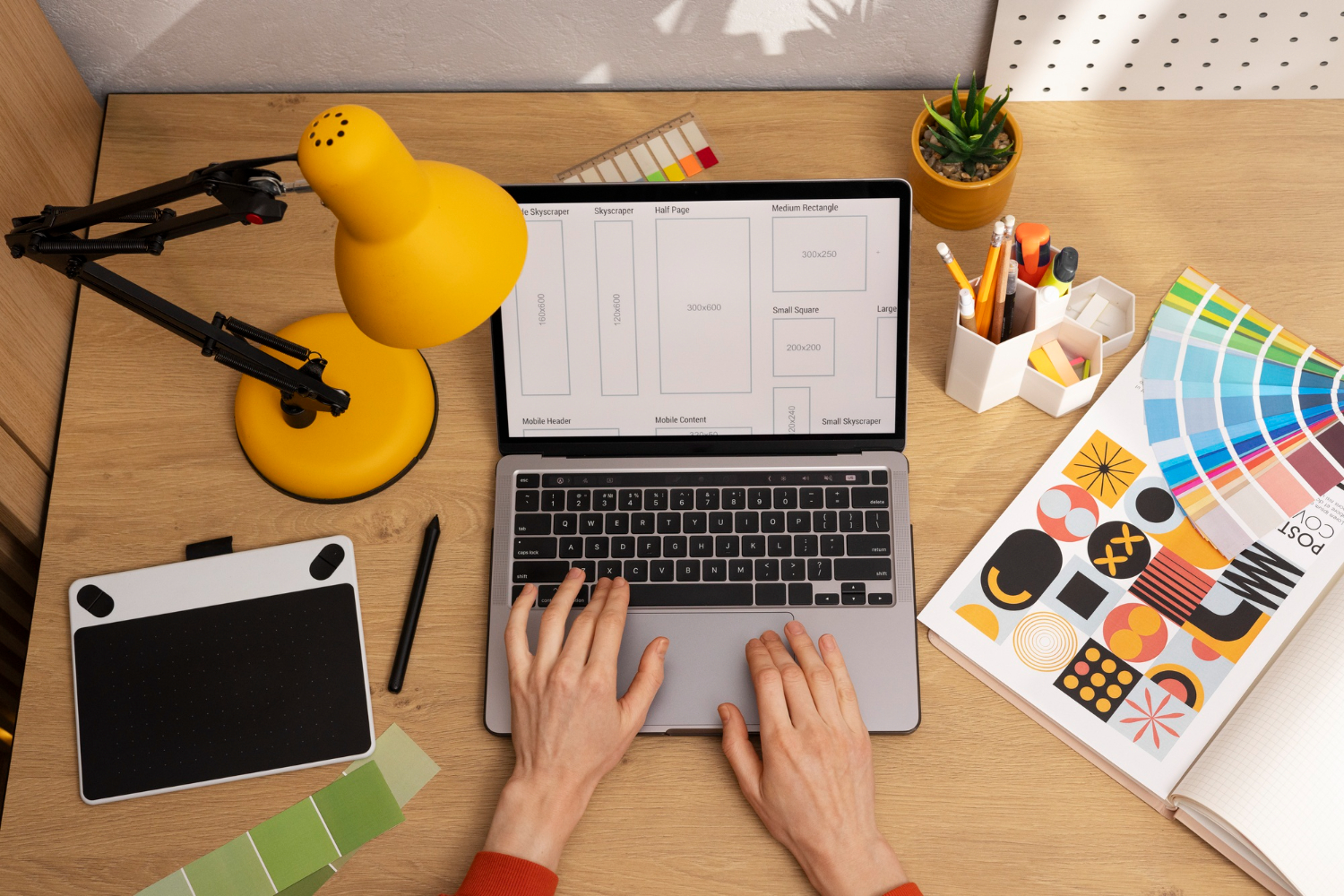
Outsource Graphic Design: Elevate Your Brand with Expert Creative Services
In today’s fast-paced digital landscape, visual storytelling has become a cornerstone of successful branding and marketing. Companies across industries are recognizing that high-quality design is not just an aesthetic choice—it directly impacts customer perception, engagement, and overall business performance. From social media campaigns and website visuals to packaging and printed collateral, every design element communicates a message about your brand.
However, creating consistent, professional, and impactful designs in-house can be challenging. Internal teams often face resource constraints, tight deadlines, or gaps in specialized skills needed for diverse design projects. This is where outsourcing graphic design emerges as a strategic solution. By partnering with experienced graphic design outsourcing companies, businesses can access creative expertise, innovative ideas, and cutting-edge design tools without the overhead costs associated with expanding internal teams.
Outsourcing allows organizations to handle both one-off projects—like a new logo or a seasonal campaign—and ongoing design needs, such as social media graphics, newsletters, or website updates. It also provides flexibility in scaling up production during peak periods without sacrificing quality or brand consistency.
Beyond cost and efficiency, outsourcing empowers companies to leverage a broader spectrum of talent. Skilled designers bring diverse perspectives, new creative approaches, and specialized knowledge in areas such as motion graphics, UX/UI design, packaging, and digital marketing assets. This infusion of expertise helps brands stay competitive, visually cohesive, and relevant in an ever-evolving market.
This article will explore the world of outsource graphic design, covering its definition, core services, strategic benefits, selection criteria for partners, risk management, emerging trends, use cases, and best practices. By the end, you will have a comprehensive understanding of how outsourcing design work can elevate your brand, optimize creative workflows, and deliver measurable results.
Whether you’re a startup, an established enterprise, or a marketing agency seeking scalable design solutions, embracing outsource creative design services can transform your visual communications and strengthen your brand’s impact across all channels.

Expanding the Definition: What “Outsource Graphic Design” Really Entails
Outsource graphic design refers to the strategic practice of hiring external professionals or agencies to manage all or part of a company’s design needs. Rather than relying solely on in-house teams, businesses leverage the expertise, creativity, and scalability of specialized design providers to produce high-quality visual assets. This approach is increasingly common across industries, from e-commerce and technology to healthcare and finance, as companies recognize the competitive advantage that professional design brings.
Outsourcing graphic design can take many forms. Some businesses engage graphic design outsourcing companies for one-off projects, such as creating a logo, developing a brand identity, or producing marketing collateral for a specific campaign. Others establish long-term partnerships for ongoing design support, covering everything from social media graphics, website visuals, email templates, and infographics to motion graphics, packaging, and product designs. The key distinction lies in the flexibility and breadth of services that external partners can provide compared to internal teams, which may be constrained by time, resources, or specialized expertise.
There are several models for outsourcing design work. Companies may choose to hire a freelancer for specific projects, contract a retainer-based agency for continuous support, or work with full-service creative firms capable of managing large-scale campaigns across multiple platforms. Retainer and subscription-based models are particularly advantageous for businesses with ongoing design demands, ensuring consistent quality and availability without the need for hiring additional staff.
Another critical aspect of outsourcing is the access to specialized skill sets. Many graphic design outsourcing providers bring expertise in advanced tools, the latest design trends, and niche areas such as UX/UI design, illustration, animation, or brand storytelling. This diversity of talent allows companies to experiment with creative approaches and elevate their visual communications beyond what might be achievable in-house.
Finally, outsourcing design work provides scalability and efficiency. During peak periods or high-demand campaigns, external teams can quickly scale resources to meet tight deadlines. This not only improves productivity but also ensures that the business maintains brand consistency and visual quality across all materials.
In essence, outsource graphic design is more than a cost-saving tactic—it’s a strategic decision that enables businesses to enhance creativity, achieve faster delivery, and maintain high-quality visual communications, all while focusing internal resources on core strategic initiatives.
Why Businesses Are Outsourcing Design: The Strategic Benefits
In the modern business landscape, outsourcing graphic design has evolved from a luxury to a strategic necessity. Organizations across sectors are increasingly leveraging external design expertise to drive brand visibility, streamline creative processes, and achieve measurable business outcomes. The decision to outsource design work is not simply about reducing costs—it reflects a conscious strategy to enhance flexibility, tap into specialized talent, and scale creative operations efficiently.
1. Cost Efficiency and Budget Optimization
One of the most immediate benefits of outsourcing design work is cost savings. Hiring a full-time internal design team comes with significant expenses: salaries, benefits, training, software licenses, and hardware. For companies with fluctuating or project-based design needs, these costs can be prohibitive.
By partnering with graphic design outsourcing companies, businesses gain access to professional design talent without the financial commitment of full-time employees. Outsourcing allows organizations to allocate budgets more strategically, paying for services as needed—whether it’s a single campaign, seasonal promotion, or ongoing creative support. This model ensures high-quality output while maintaining financial flexibility, which is particularly valuable for startups and small businesses.
2. Access to Specialized Expertise
External design partners bring diverse skill sets and specialized knowledge that may not exist internally. From UX/UI design and motion graphics to branding, packaging, and illustration, outsourcing provides access to a wider pool of creative talent. These professionals stay up-to-date with the latest tools, trends, and industry standards, ensuring that businesses receive innovative, contemporary designs.
Specialized agencies also understand how to adapt design strategies across platforms—websites, social media, email campaigns, and print materials—maintaining consistency and maximizing impact. This expertise helps companies create cohesive visual identities that resonate with audiences and reinforce brand recognition.
3. Scalability and Flexibility
Outsourcing design work allows businesses to scale their creative efforts according to demand. During product launches, marketing campaigns, or peak sales periods, external teams can quickly ramp up production without overburdening internal staff. Conversely, during slower periods, the company can reduce outsourced services, avoiding the costs of idle in-house resources.
This flexibility is especially beneficial for companies with seasonal or cyclical design needs. It ensures that projects are delivered on time, without compromising quality, while maintaining a cost-effective approach to resource management.
4. Faster Turnaround and Time-to-Market
Professional graphic design outsourcing services often provide faster delivery times due to established workflows, specialized tools, and experienced teams. This speed enables companies to launch marketing campaigns, promotional materials, and product designs more quickly, gaining a competitive advantage in fast-moving markets.
Additionally, outsourcing reduces the time internal teams spend on complex design tasks, allowing them to focus on strategic initiatives, such as brand development, marketing planning, and business growth.
5. Enhanced Creativity and Fresh Perspectives
Bringing in external designers introduces fresh ideas and diverse perspectives. Outsourcing partners often work with multiple clients across industries, providing insights into emerging trends, innovative design approaches, and audience preferences.
This infusion of creativity can elevate a brand’s visual identity, making campaigns more engaging and visually compelling. Companies benefit from the combination of internal brand knowledge and external creative expertise, ensuring that designs are both authentic and innovative.
6. Risk Reduction and Quality Assurance
Reputable graphic design outsourcing companies have established quality control processes, ensuring consistency, accuracy, and adherence to brand guidelines. They also mitigate risks related to missed deadlines, overworked staff, or uneven quality, providing reliable, professional outputs that meet business objectives.
Outsourcing graphic design offers strategic advantages that go beyond cost savings. It provides access to specialized talent, enhances creativity, ensures scalability, improves time-to-market, and delivers consistent, high-quality designs. By leveraging these benefits, businesses can strengthen their visual presence, optimize internal resources, and focus on core growth initiatives—making outsourced design a powerful component of a modern, competitive strategy.

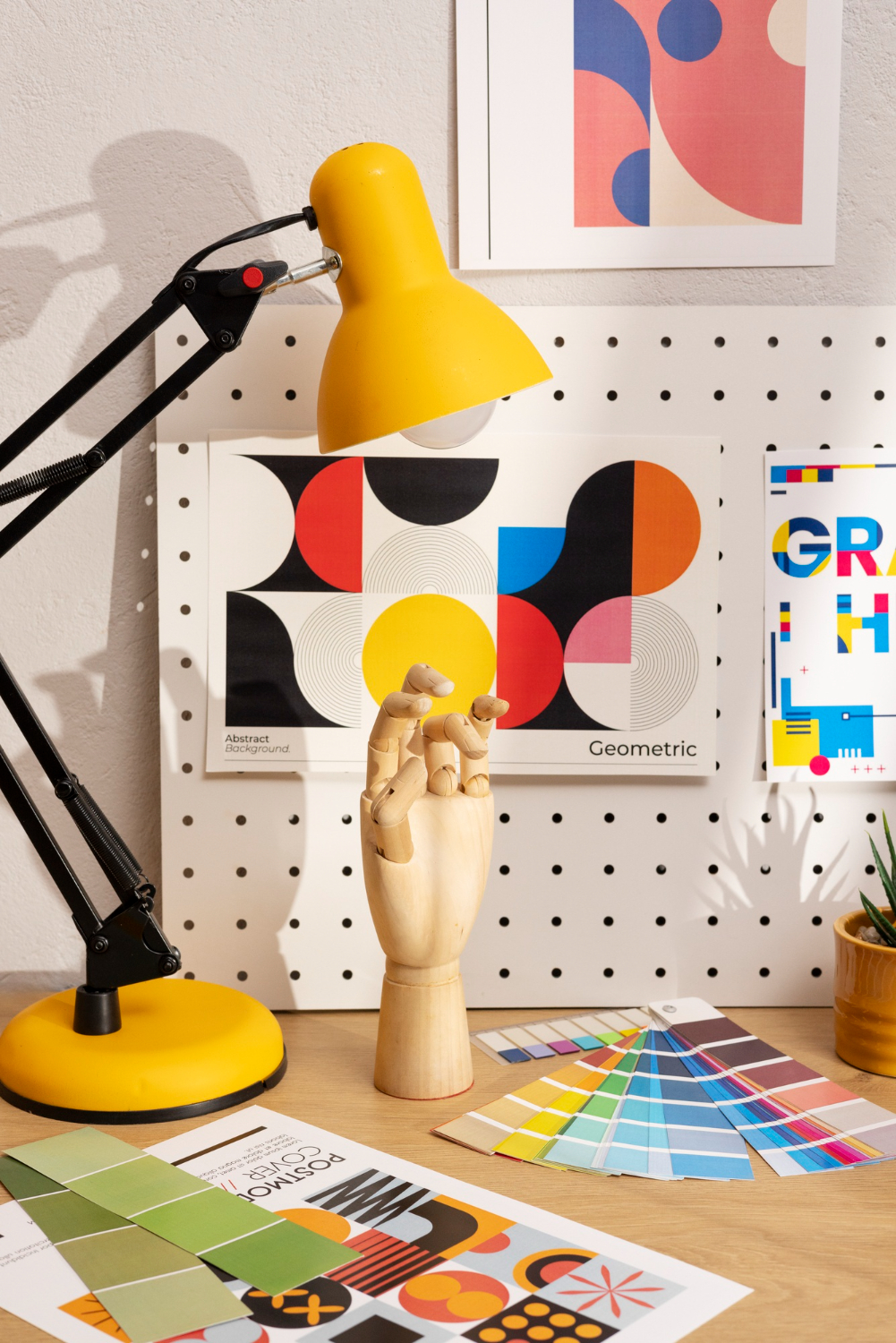

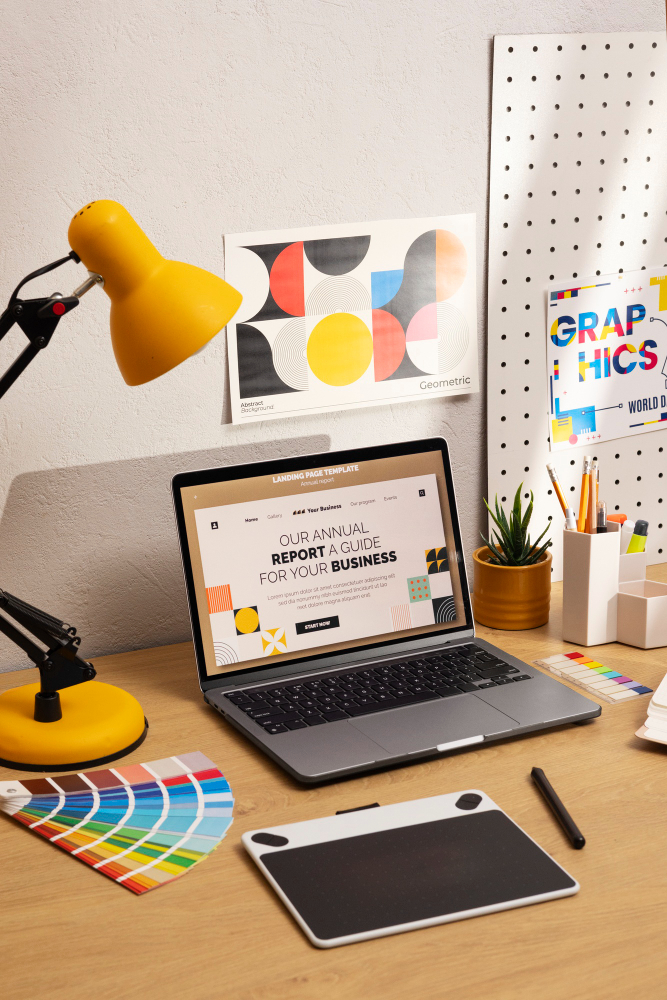
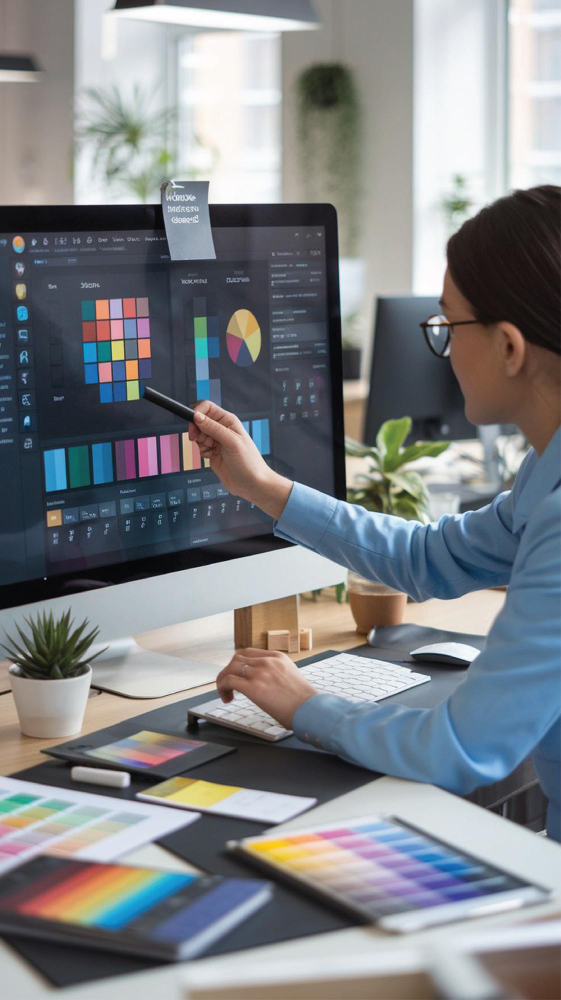
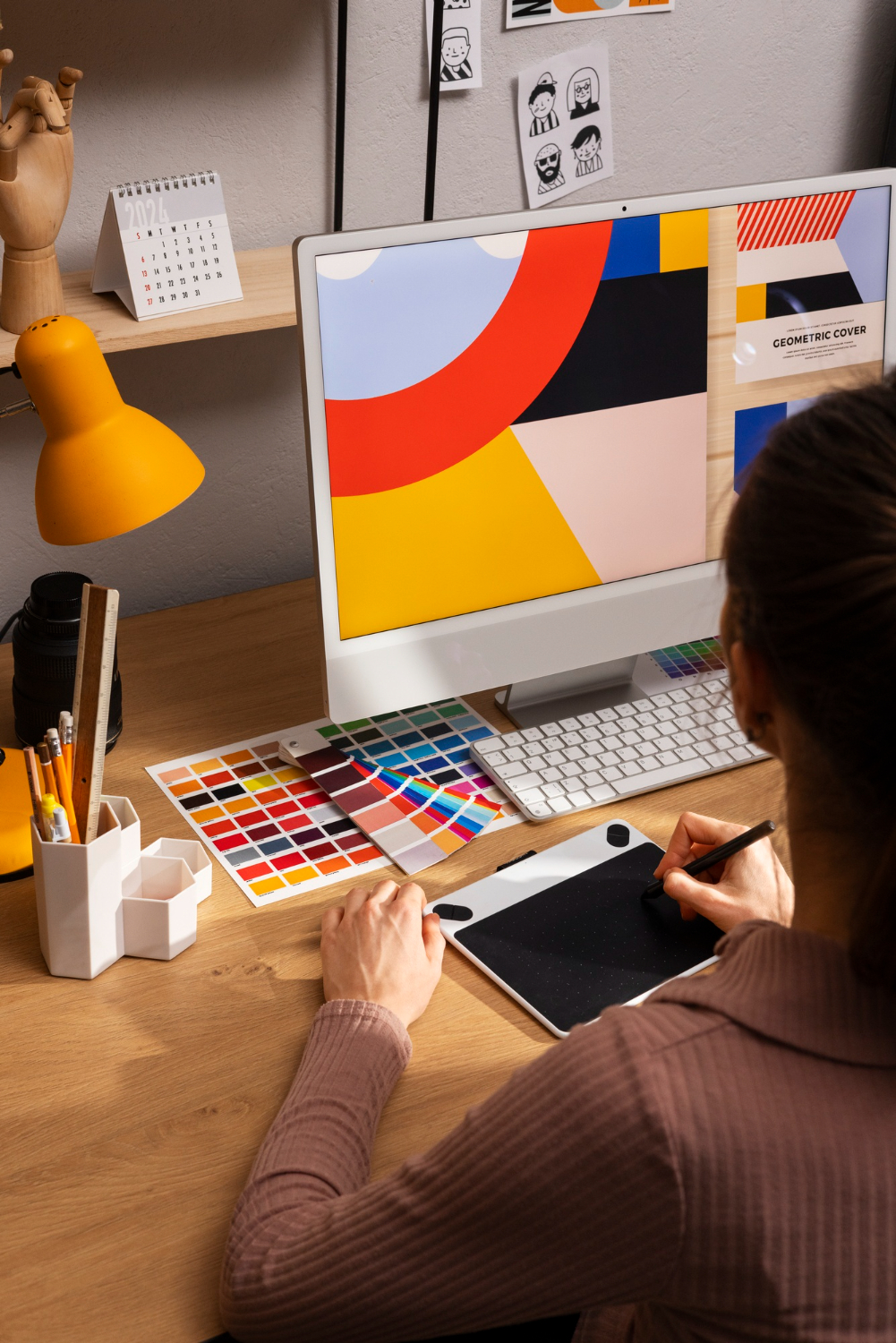
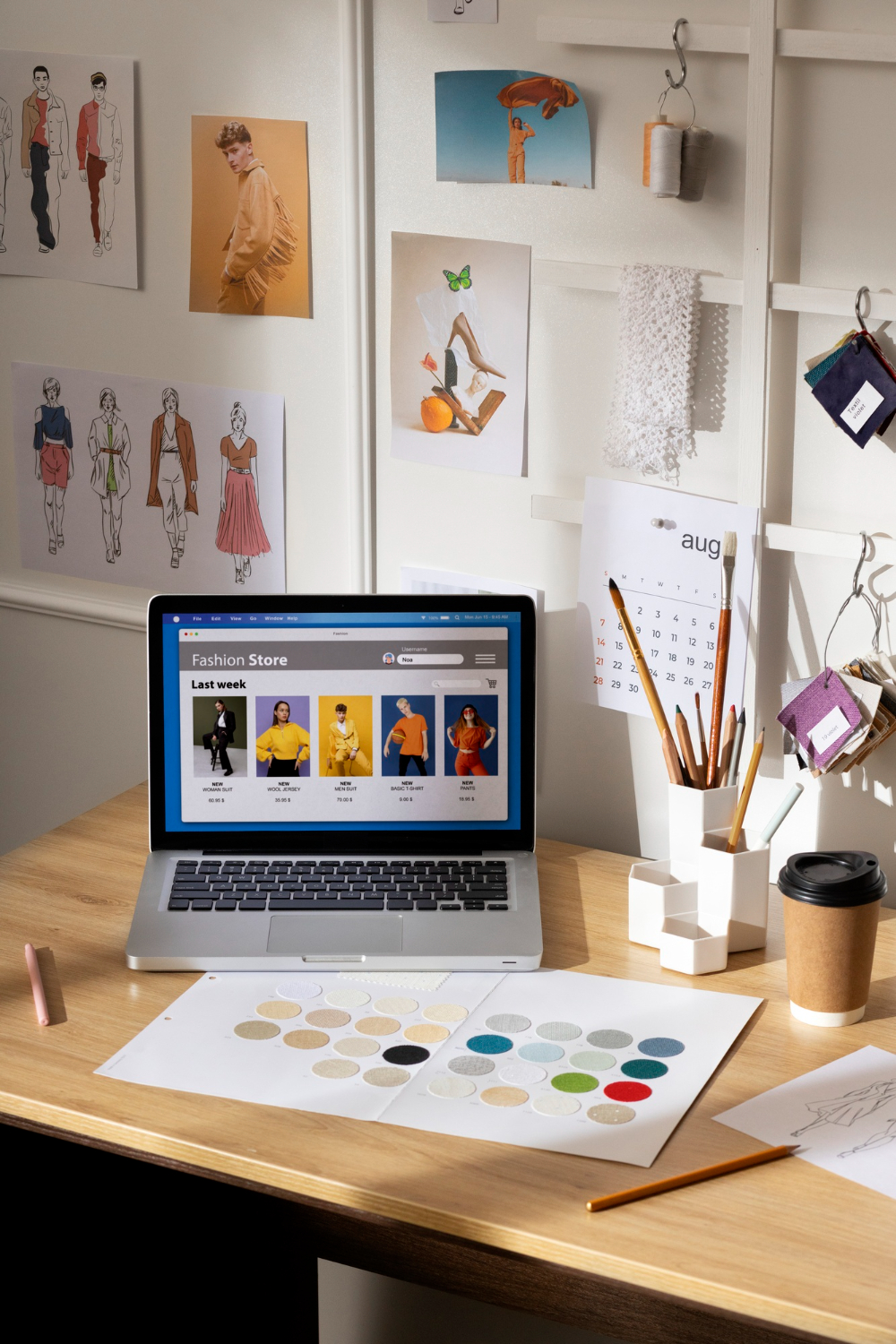
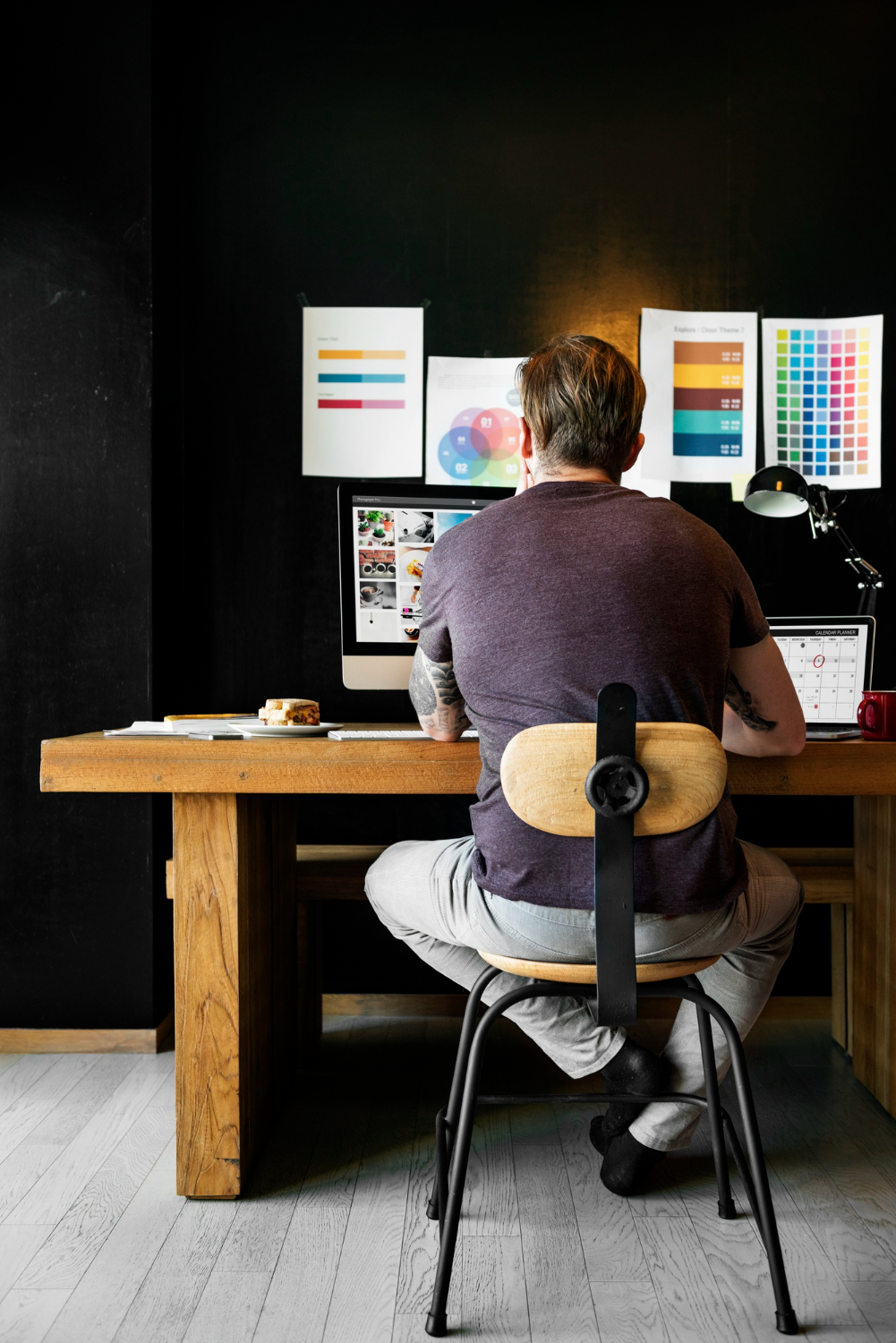


Core Design Services That Can Be Outsourced
Outsourcing graphic design opens up a world of possibilities for businesses to access specialized creative services without the limitations of an in-house team. Companies can leverage external expertise to produce high-quality visual assets that enhance branding, marketing, and communication strategies. Here are the core design services that organizations commonly outsource and the benefits of each.
1. Branding and Identity Design
Brand identity forms the foundation of a company’s visual presence. Outsourcing branding and identity design allows businesses to develop logos, typography, color palettes, and comprehensive style guides that accurately reflect their values and vision. Experienced graphic design outsourcing companies bring strategic insights and creative expertise to create identities that resonate with target audiences, ensuring consistency across all channels.
Key deliverables include:
- Logo creation and refinement
- Brand style guides
- Iconography and visual elements
- Corporate stationery and templates
By outsourcing branding, companies benefit from external perspectives that can elevate brand positioning while saving the internal team time and resources.
2. Digital and Social Media Design
With digital marketing becoming the primary touchpoint for customers, design for online platforms is crucial. Outsourcing social media graphics, website visuals, and digital ads ensures visually compelling content that engages audiences and drives conversions.
Outsourced designers can handle:
- Social media campaigns (Instagram, Facebook, LinkedIn, TikTok)
- Email marketing templates
- Banner ads and display creatives
- Website graphics and landing page visuals
These services allow businesses to maintain a consistent digital presence without overloading in-house teams, ensuring timely delivery and professional-quality visuals.
3. Print and Packaging Design
Despite the shift toward digital, print and packaging remain essential for many industries. Outsourcing print design ensures that materials like brochures, flyers, posters, and product packaging meet professional standards.
Services include:
- Marketing collateral design (brochures, catalogues, flyers)
- Packaging and label design
- Trade show displays and signage
- Print-ready file preparation and production support
External designers bring expertise in print specifications, color management, and production processes, which reduces errors, improves visual impact, and ensures materials meet industry standards.
4. Motion Graphics and Animation
Dynamic content is increasingly in demand for both marketing and training purposes. Outsourcing motion graphics and animation allows companies to produce high-quality videos without needing full-time animators.
Typical projects include:
- Animated social media posts and ads
- Explainer videos and product demos
- Infographics and visual storytelling
- Interactive presentations
Motion design enhances engagement, simplifies complex information, and adds a modern edge to marketing strategies.
5. UX/UI and Web Design
Digital interfaces require careful attention to user experience and visual design. Outsourcing UX/UI design enables businesses to create functional, visually appealing websites and applications without straining internal teams.
Key deliverables include:
- Website layouts and design systems
- Mobile app interfaces
- Wireframes and prototypes
- Interactive elements and micro-animations
Outsourced designers combine aesthetics with usability, ensuring digital platforms are intuitive, responsive, and aligned with brand guidelines.
6. Illustration and Specialized Creative Services
Some projects require custom illustrations, infographics, or artistic visuals. External creative teams provide expertise in these niche areas, adding unique flair and originality to marketing materials.
Examples include:
- Custom illustrations for publications or campaigns
- Infographics that simplify complex data
- Icon sets and bespoke visual elements
7. Models of Engagement
Companies can engage external designers in several ways:
- Project-based: One-off campaigns or design deliverables
- Retainer-based: Ongoing monthly support for continuous needs
- Subscription services: Flexible packages for a set number of design hours
Choosing the right model depends on the company’s volume of work, strategic priorities, and budget.
By outsourcing these core design services, businesses can access specialized talent, speed up production, and maintain high-quality visual standards across all channels. It allows internal teams to focus on strategy and business growth while external experts handle creative execution, ensuring consistency, innovation, and impact in every visual communication.
Avoda’s graphic design outsourcing solutions provide the expertise, creativity, and reliability you need.
Start your partnership today and transform the way your brand communicates visually—efficiently, strategically, and creatively.
How to Choose the Right Outsourcing Design Partner
Selecting the right partner for outsourcing graphic design is a critical decision that can significantly impact the quality, consistency, and effectiveness of a company’s visual communications. The ideal design partner not only delivers high-quality creative assets but also aligns with your brand values, understands your goals, and integrates seamlessly with your internal processes. Here’s a comprehensive guide on how to choose the right outsourcing design agency or provider.
1. Assess Expertise and Specialization
Start by evaluating a potential partner’s skill set and experience. Different design providers excel in specific areas—branding, digital graphics, UX/UI design, motion graphics, packaging, or illustration. Check their portfolio to determine if their style and approach match your brand’s aesthetic and creative requirements.
Working with a provider that has experience in your industry can also be advantageous. For instance, an agency familiar with e-commerce design trends will understand the visual strategies that drive online conversions, while a team experienced in corporate branding will ensure professional and consistent identity standards.
2. Evaluate Communication and Collaboration
Strong communication is essential for successful design outsourcing. Look for a partner that:
- Responds promptly and transparently
- Actively seeks feedback and clarifies project requirements
- Uses collaboration tools (like project management software) to keep your team informed
The right agency should feel like an extension of your internal team rather than an isolated vendor. Seamless collaboration ensures that the creative vision is accurately translated into final deliverables and reduces the risk of revisions or misalignment.
3. Review Workflow and Processes
A professional graphic design outsourcing company will have clearly defined workflows and project management processes. This includes:
- Structured briefing and kickoff meetings
- Milestone-based progress tracking
- Quality control and review checkpoints
- Efficient delivery and handoff protocols
Understanding their processes helps you gauge whether the agency can meet your deadlines while maintaining high-quality standards.
4. Consider Flexibility and Scalability
Your design needs may fluctuate depending on marketing campaigns, product launches, or seasonal initiatives. Choose a partner capable of scaling resources up or down according to project demands. Flexible engagement models—project-based, retainer-based, or subscription services—allow your business to access creative support without unnecessary overhead.
5. Assess Intellectual Property and Ownership Rights
Clear agreements regarding IP rights and ownership are crucial. Ensure the outsourcing partner transfers full rights to designs upon project completion. This protects your brand and ensures that you have complete control over the creative assets produced.
6. Check Client References and Reviews
References and testimonials from previous clients provide insights into an agency’s reliability, professionalism, and ability to deliver results. Look for patterns in feedback related to creativity, timeliness, communication, and responsiveness.
7. Align on Budget and Value
While cost is a consideration, it should not overshadow quality. Evaluate pricing in the context of value delivered. A reputable outsourcing partner will provide transparent pricing and demonstrate how their services contribute to brand growth and marketing success.
By carefully assessing expertise, communication, workflows, scalability, IP rights, client feedback, and budget, businesses can select a design partner that not only meets project requirements but also becomes a strategic ally in driving brand impact. The right outsourcing relationship ensures consistent, high-quality design work that elevates your marketing initiatives while allowing internal teams to focus on core business priorities.
Challenges & Risk Management in Design Outsourcing
While outsourcing graphic design offers undeniable advantages—cost efficiency, scalability, and access to global creative talent—it also presents certain challenges that must be managed strategically. Recognizing potential risks and proactively developing solutions ensures that outsourcing becomes a long-term success rather than a short-term fix.
1. Communication and Time Zone Barriers
One of the most common challenges in graphic design outsourcing is managing communication across different time zones or cultural contexts. Delays in feedback, misinterpretation of creative briefs, or differences in design sensibilities can lead to frustration and slower turnaround times.
How to mitigate it:
- Establish clear communication channels (Slack, Trello, Asana, or email threads).
- Define overlapping work hours for real-time collaboration.
- Use visual tools (mood boards, mockups, design briefs) to minimize ambiguity.
- Schedule regular check-ins and progress updates to maintain alignment.
Effective communication not only prevents misunderstandings but also strengthens collaboration and trust between both parties.
2. Maintaining Brand Consistency
When working with external design teams, maintaining brand integrity across multiple assets can be challenging. Variations in color, typography, or tone of voice may create inconsistencies that weaken the overall brand identity.
How to mitigate it:
- Share a comprehensive brand style guide before the project begins.
- Request initial sample designs to verify brand alignment.
- Appoint a dedicated internal contact to review all deliverables for consistency.
Brand control systems and templates can also help ensure all outsourced visuals remain cohesive across platforms and campaigns.
3. Quality Control and Creative Expectations
Quality variations are another potential risk. The external team’s creative approach may differ from your expectations, leading to multiple revisions or delays.
How to mitigate it:
- Set detailed project briefs with clear deliverables and examples.
- Define review stages and approval checkpoints.
- Start with smaller test projects before committing to a long-term partnership.
Working with reputable graphic design outsourcing companies that prioritize quality assurance can significantly reduce this risk.
4. Data Security and Intellectual Property Protection
Design outsourcing often involves sharing sensitive brand materials, internal data, or campaign strategies. Without proper agreements, this can expose a business to security or IP risks.
How to mitigate it:
- Use Non-Disclosure Agreements (NDAs) and define IP ownership in contracts.
- Work with partners that follow secure file-sharing protocols and cloud storage systems.
- Ensure the agency transfers full ownership rights upon completion.
5. Dependence on External Resources
Overreliance on an external design partner can create dependency, especially if internal teams lack the skills to manage design tasks independently.
How to mitigate it:
- Maintain a small internal creative team for oversight.
- Document processes and retain editable design files.
- Establish backup partnerships or flexible contracts.
By anticipating these challenges and implementing structured risk management practices, businesses can transform design outsourcing into a sustainable strategic advantage. The key lies in balancing creativity with control—empowering external designers to innovate while ensuring brand integrity, data security, and smooth collaboration at every stage.
When to Outsource Design vs Keep In-House (or Hybrid Model)
Deciding whether to outsource graphic design or maintain an in-house team is a strategic choice that depends on a company’s goals, resources, and creative needs. Both approaches offer advantages, and in many cases, a hybrid model—combining internal oversight with external expertise—can deliver the best results.
1. When to Outsource Design
Outsourcing is ideal in situations where businesses need specialized skills, flexibility, or scalability. Common scenarios include:
- Project-Based Campaigns: Launching a seasonal marketing campaign, product packaging, or social media series that requires high-volume or specialized design work.
- Skill Gaps: When internal teams lack expertise in areas like motion graphics, UX/UI design, or illustration.
- Rapid Turnaround Needs: Agencies with established workflows can deliver high-quality designs faster than a stretched internal team.
- Cost Efficiency: Outsourcing avoids the overhead of hiring full-time employees, paying benefits, and investing in software or hardware.
By engaging graphic design outsourcing companies, businesses gain access to professional talent on demand, ensuring quality and consistency while freeing internal teams to focus on strategy and core operations.
2. When to Keep Design In-House
Internal design teams work best when a company requires tight control over brand identity and creative direction. Scenarios include:
- Daily or Constant Design Needs: Brands that produce high volumes of content regularly may benefit from having a dedicated in-house team.
- Sensitive or Proprietary Work: Projects involving confidential marketing strategies or highly specialized branding may require internal oversight.
- Brand-Centric Creative Vision: Maintaining a team that deeply understands company culture, voice, and values ensures that designs align perfectly with the brand.
An in-house team provides immediacy, direct communication, and intimate knowledge of brand guidelines, which can enhance cohesion across all visual materials.
3. The Hybrid Model
For many companies, the most effective solution is a hybrid approach. This model combines internal teams handling core strategy, brand guidelines, and oversight with external partners executing high-volume or specialized design tasks.
Benefits of a hybrid model include:
- Flexibility to scale resources during peak periods
- Access to specialized skills without expanding headcount
- Balanced control over brand quality and creative innovation
- Reduced risk of internal bottlenecks during campaigns
A hybrid setup allows companies to maximize efficiency, quality, and innovation, leveraging the strengths of both internal and external teams.
In conclusion, the decision to outsource, keep in-house, or adopt a hybrid approach should be based on project scope, team capacity, budget, and strategic goals. Businesses that align their design resources with these factors can ensure consistent, high-quality creative output while maintaining agility and cost efficiency.
Emerging Trends in Graphic Design Outsourcing
The world of graphic design outsourcing is constantly evolving, driven by technological advancements, shifting market demands, and changing consumer expectations. Staying ahead of these trends allows businesses to maximize the value of outsourced design services, ensuring their visuals remain engaging, relevant, and innovative.
1. Integration of AI and Design Tools
Artificial intelligence is transforming how design work is executed. Tools powered by AI can automate repetitive tasks, generate design mockups, and even suggest layouts, color schemes, and typography. Outsourcing partners are increasingly leveraging AI to enhance creativity, improve efficiency, and reduce turnaround times, while human designers focus on conceptual and strategic work.
This hybrid approach of AI-assisted design ensures that businesses benefit from faster production without compromising on quality or originality.
2. Remote Collaboration and Cloud-Based Workflows
With the rise of remote work, cloud-based collaboration tools are becoming standard in design outsourcing. Platforms like Figma, Adobe Creative Cloud, and collaborative project management software allow teams to work in real time, share feedback instantly, and maintain version control.
This trend enables businesses to work seamlessly with global design talent, breaking down geographical barriers and facilitating collaboration across multiple time zones.
3. Increased Demand for Niche and Specialized Design Skills
Companies are increasingly outsourcing specialized creative services, such as UX/UI design, motion graphics, interactive infographics, and 3D illustration. The demand for these niche skills reflects the growing complexity of digital marketing, immersive experiences, and interactive content. Outsourcing allows businesses to access these capabilities without the need for permanent hires.
4. Focus on Brand Consistency Across Multi-Channel Campaigns
Modern marketing requires cohesive visuals across digital, print, and social media channels. Outsourcing providers are adopting multi-channel design strategies, ensuring consistency in brand messaging, color palettes, typography, and tone. This holistic approach strengthens brand identity and improves audience engagement.
5. Emphasis on Sustainable and Ethical Design Practices
Sustainability and ethical design are becoming priorities for both brands and consumers. Design agencies are incorporating eco-friendly materials, digital-first strategies, and inclusive design principles into their outsourced projects. Businesses benefit from these practices by aligning with consumer values and enhancing corporate social responsibility.
6. Flexible Engagement Models
Businesses are increasingly opting for flexible engagement models, such as subscription-based services, retainers, or hybrid arrangements. These models provide scalability, cost predictability, and access to specialized talent, allowing companies to adjust their creative capacity as needed.
By keeping pace with these emerging trends, businesses can ensure their outsourced design services remain innovative, efficient, and aligned with evolving market needs. Embracing AI, cloud-based workflows, specialized skills, multi-channel consistency, sustainability, and flexible partnerships positions companies to maximize the strategic impact of their design outsourcing initiatives.
Outsourcing graphic design has become a strategic cornerstone for modern businesses aiming to enhance creativity, efficiency, and brand impact. By leveraging external expertise, companies can access a broad spectrum of specialized skills, scale design efforts according to demand, and maintain high-quality visuals across all marketing channels. This approach not only optimizes resources but also allows internal teams to focus on core business objectives and strategic initiatives.
The key to success lies in selecting the right outsourcing partner—one that aligns with your brand values, understands your creative vision, and integrates seamlessly into your workflows. Clear communication, defined processes, and flexibility ensure that collaboration remains productive and impactful, regardless of project size or complexity.
FOR GROWING SMES
Power Up Your
Business Operations
Business Operations

FOR TALENTED WORKERS
Access An
International Market
International Market


